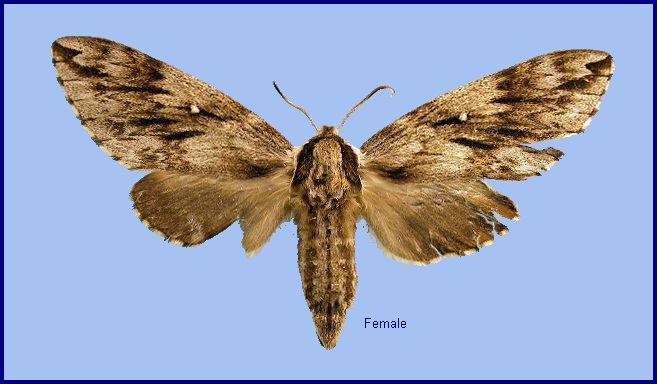
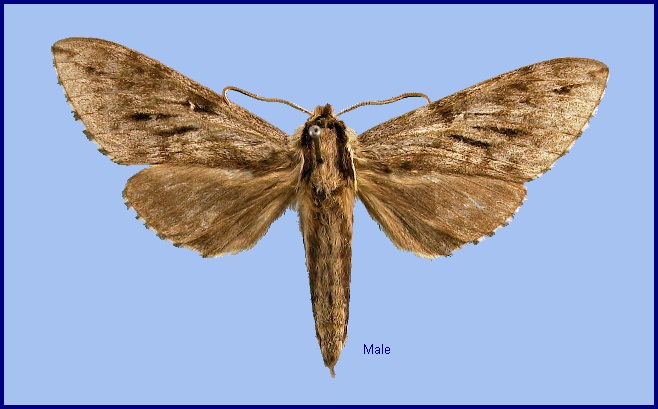
Kentochrysalis [sic] consimilis Rothschild & Jordan, 1903, Novit. zool. 9 (suppl.): 163 (key), 164. Type locality: Japan, [Honshu, Tochigi, near Nikko,] Chinzengi [Chuzenji-ko]; Japan, [Honshu,] Tokei [Tokyo]; Japan, [Honshu, Tochigi,] Nikko.
Note. Kim, Kim, Choi, Cho & Kim (2016) have demonstrated that what were assumed to be specimens of Kentrochrysalis consimilis collected from South Korea were Kentochrysalis streckeri, rather than Kentochrysalis consimilis, based on morphology, DNA barcodes and nuclear elongation factor1 alpha (EF-1) sequences. The major morphological differences between Kentochrysalis streckeri and Kentochrysalis consimilis include the shape of forewing and hind-wing pattern elements, and the male and female genitalia. DNA barcode analysis of South Korean and Russian Kentochrysalis streckeri showed a maximum sequence divergence of only 0.659% (4 bp), whereas that of the South Korean specimens and Japanese Kentochrysalis consimilis showed a minimum sequence divergence of 2.965% (18 bp), indicating that the Korean specimens are, in fact, Kentochrysalis streckeri and not Kentochrysalis consimilis. Phylogenetic analyses, both by Bayesian inference and maximum likelihood methods, strongly clustered the South Korean specimens and Russian Kentochrysalis streckeri into one group, excluding Kentochrysalis consimilis. The EF-1-based sequence and phylogenetic analyses of the two species also supported data from the DNA barcode, indicating the presence of Kentochrysalis streckeri in South Korea, instead of Kentochrysalis consimilis.
[Further details on this species in Japan, as well as photos of many stages, can be found on Digital Moths of Japan as well as Moths of the southern Shikoku, Japan.]
Wingspan: 62--72mm. Most similar in appearance to Kentrochrysalis streckeri, but differs in having the forewing upperside discal lines less dentate; the two antemedian lines distinct, ending at the inner margin in a blackish patch that is prolonged basad.
In the male genitalia, uncus suddenly narrowed to a short, pointed hook. Gnathos divided into 2 triangular lobes. Valve similar to that of Kentrochrysalis sieversi, broadest near the base. Harpe similar to that of Kentrochrysalis sieversi, but the ventral process shorter; in addition there are 5 or 6 further processes, which vary in form and position between specimens, but the most ventral is always large. Phallus as in Kentrochrysalis sieversi.
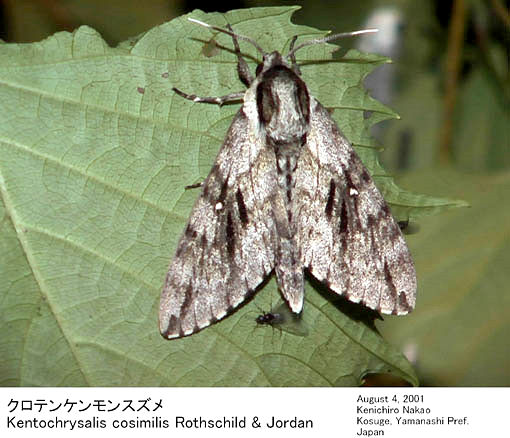
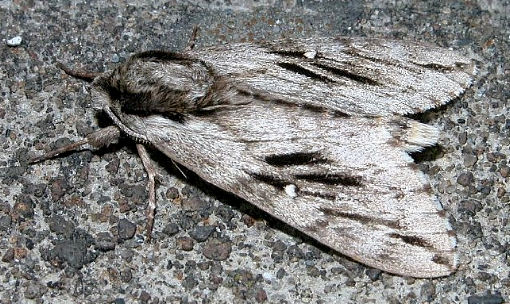
Japan: 4.vi (Shikoku); 19.v-14.vii (Honshu); 6.viii (Honshu).
OVUM: Pale yellow when first laid, oval (2.1 x 1.9mm), shiny and smooth.
LARVA: See Moths of the southern Shikoku, Japan.
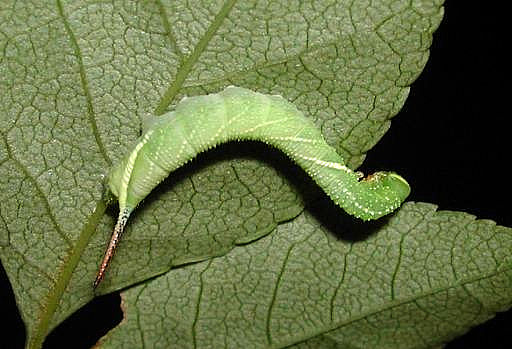
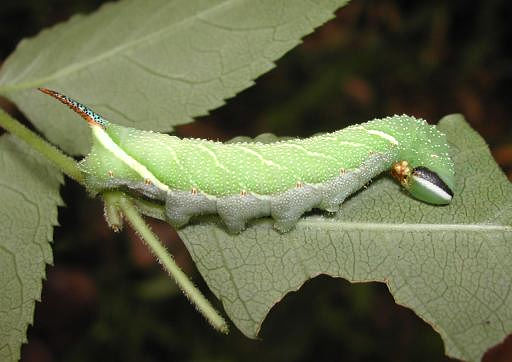
PUPA:
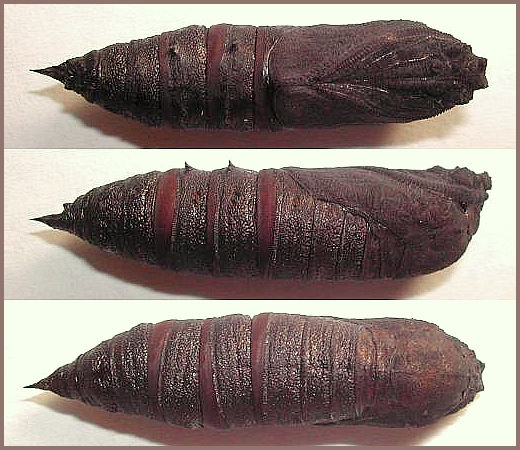
Larval hostplants. Recorded from Fraxinus, Ligustrum and Syringa.
Japan: Honshu (Chiuzenji; Schirane; Karuizawa; Nikko; Hoppo; Mt. Daisen; Tokei-ji; Mt. Mitake, Tokyo; Kirizumi Spa, 1080m; Yunotaira Spa; Gozaishodake; Kisojihara; Mitsumine; Kiyosato, 1300m); Shikoku (Saijo); Kyushu.
Endemic to Japan. Records from mainland Asia are erroneous and are of misidentified individuals of Kentrochrysalis streckeri, as demonstrated by Kim, Kim, Choi, Cho & Kim (2016) for South Korea.
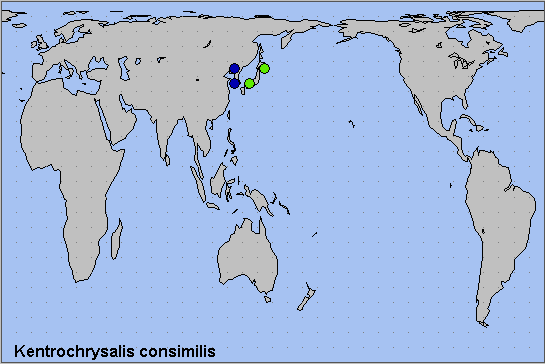
 Return to Sphingidae of the Eastern Palaearctic species list
Return to Sphingidae of the Eastern Palaearctic species list